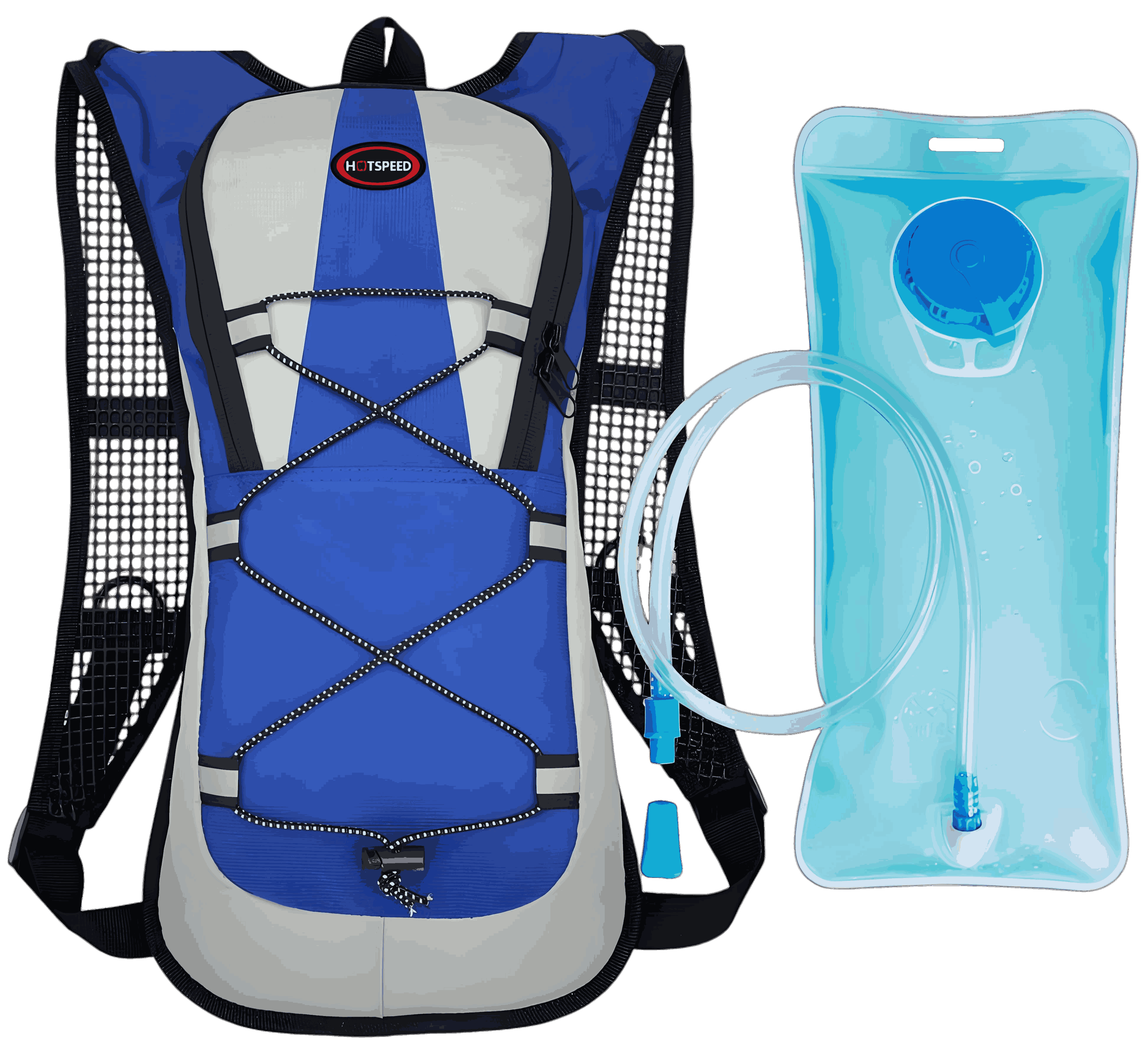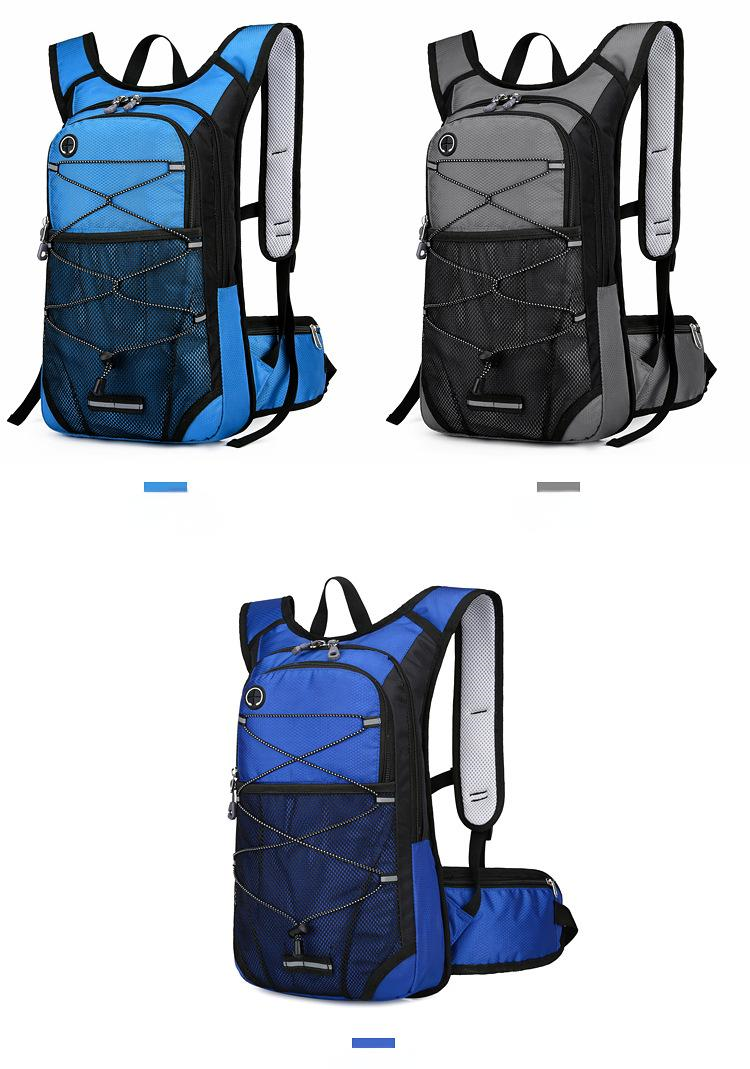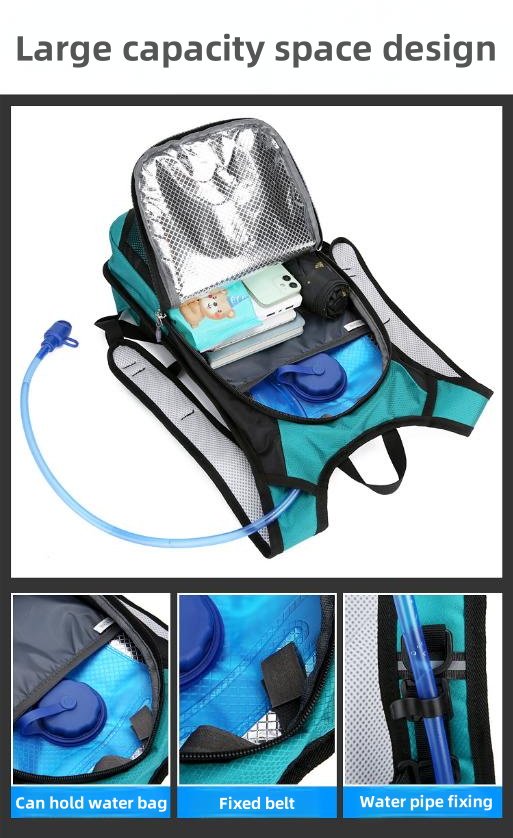As an avid backpacker and outdoor gear enthusiast with years of experience exploring trails and testing equipment, I’ve learned the importance of keeping my gear clean and safe. One piece of equipment that often gets overlooked is the hydration bladder, a lifesaver for staying hydrated on long hikes but also a potential breeding ground for bacteria if not properly maintained. I’ve had my share of moments where a funky smell or cloudy water made me realize that disinfecting my hydration bladder isn’t just a chore—it’s a necessity. If you’re wondering how to keep your hydration bladder clean and safe, this article will walk you through the most effective disinfection methods, share practical tips from my own adventures, and help you avoid common pitfalls. Let’s dive in and ensure your water stays fresh and safe on every trip.

Why Disinfecting Your Hydration Bladder Matters
A hydration bladder is a convenient way to carry and sip water on the go, but its design—moist, enclosed, and often hard to dry—makes it a perfect environment for mold, bacteria, and algae to thrive. I learned this the hard way during a multi-day trek in the mountains when I noticed a strange taste in my water. After inspecting my bladder, I found a slimy film inside. Not only was it gross, but it could have made me sick if left unchecked. Regular disinfection prevents health risks, extends the lifespan of your gear, and ensures your water tastes clean.
Disinfection isn’t just about cleaning after every use; it’s about proactive maintenance to avoid contamination. Whether you’re using your bladder for a weekend hike or a month-long expedition, knowing how to disinfect it properly is key to a safe and enjoyable outdoor experience.
Common Disinfection Methods for Hydration Bladders
Over the years, I’ve tried various methods to disinfect my hydration bladder, each with its pros and cons. Below, I’ll detail the most effective approaches, based on my own experiences and research, to help you choose the best one for your needs.
1. Hot Water and Mild Soap
This is my go-to method for regular cleaning and light disinfection, especially after short trips. It’s simple, cost-effective, and doesn’t require special chemicals.
Steps:
Empty any remaining water from the bladder.
Fill the bladder halfway with warm (not boiling) water, around 40-50°C (104-122°F), to avoid damaging the material.
Add a small amount of mild, unscented dish soap (a few drops are enough).
Close the bladder and shake vigorously for 30 seconds to loosen any residue.
Use a cleaning brush (designed for hydration bladders) to scrub the interior, focusing on corners and seams.
Open the drinking tube and run soapy water through it, scrubbing with a thin tube brush if available.
Rinse thoroughly with clean water to remove all soap residue.
Hang the bladder upside down with the cap off to air dry completely.
Pros: Safe, inexpensive, and uses household items. Works well for removing light buildup.
Cons: Not strong enough for heavy mold or bacterial contamination. Requires thorough drying to prevent mold growth.
I’ve used this method after day hikes when my bladder just needs a quick refresh. It’s reliable for routine maintenance but may not tackle stubborn growth.

2. Baking Soda and Vinegar
For a deeper clean, especially when dealing with odors or mild mold, I turn to this natural, chemical-free solution. The combination of baking soda and vinegar creates a fizzing reaction that helps break down grime.
Steps:
Empty the bladder and rinse it with warm water.
Add ¼ cup of baking soda and ¼ cup of white vinegar to the bladder.
Fill the bladder halfway with warm water and close it.
Shake gently and let the mixture sit for 10-15 minutes to fizz and loosen debris.
Scrub the interior with a cleaning brush, paying attention to the tube and mouthpiece.
Drain the solution, rinse thoroughly with clean water, and flush the tube.
Air dry completely, ideally with a drying rack or by hanging upside down.
Pros: Eco-friendly, effective for odors and light mold, and uses pantry staples.
Cons: Requires multiple rinses to remove residue. Not as effective for heavy contamination.
I once used this method after leaving water in my bladder for a week (a rookie mistake). The musty smell was gone after one treatment, and the bladder was ready for my next trip.
3. Bleach Solution
When I suspect serious bacterial or mold growth, bleach is my heavy-duty solution. It’s highly effective but requires caution to avoid damaging the bladder or leaving harmful residues.
Steps:
Mix 1 teaspoon of unscented household bleach (5-6% sodium hypochlorite) with 1 liter of water.
Fill the bladder with the solution and shake for 30 seconds.
Let it sit for 1-2 minutes (no longer to avoid material degradation).
Run the solution through the drinking tube and mouthpiece.
Drain completely and rinse thoroughly with clean water at least 3 times.
Air dry fully to ensure no bleach or moisture remains.
Pros: Kills bacteria and mold effectively, ideal for deep disinfection.
Cons: Risk of damaging the bladder if left too long. Requires careful rinsing to avoid chemical residue.
I’ve used bleach after a trip where I noticed black spots inside my bladder. It worked like a charm, but I made sure to rinse thoroughly to avoid any aftertaste.

4. Commercial Cleaning Tablets
For convenience, especially on long trips, I sometimes use cleaning tablets designed for hydration bladders. These are formulated to kill bacteria and remove buildup without damaging the material.
Steps:
Fill the bladder with warm water (follow tablet instructions for volume).
Add the recommended number of tablets (usually 1-2) and let them dissolve.
Shake the bladder and let the solution sit for the specified time (typically 5-20 minutes).
Run the solution through the tube and mouthpiece.
Drain and rinse thoroughly with clean water.
Air dry completely.
Pros: Easy to use, portable for travel, and effective for most contamination.
Cons: More expensive than DIY methods. May not be available in remote areas.
I keep a pack of these tablets in my gear bag for multi-day trips when carrying vinegar or bleach isn’t practical. They’ve saved me when I needed a quick, reliable clean.
5. UV Light Sterilization
For tech-savvy backpackers, UV light devices designed for water bottles or bladders are an emerging option. These use ultraviolet light to kill bacteria and pathogens.
Steps:
Empty and rinse the bladder to remove visible debris.
Insert the UV sterilization device (following manufacturer instructions).
Run the UV cycle, usually 1-2 minutes, ensuring all surfaces are exposed.
Rinse the bladder and tube with clean water.
Air dry thoroughly.
Pros: Chemical-free, highly effective against bacteria and viruses.
Cons: Expensive and requires a specialized device. Not practical for all users.
I haven’t personally invested in a UV sterilizer yet, but I’ve seen them used by friends on group trips, and they’re impressive for their ease and effectiveness.

Comparison of Disinfection Methods
To help you decide which method suits your needs, here’s a table summarizing the key aspects of each approach:
| Method | Effectiveness | Ease of Use | Cost | Best For |
|---|---|---|---|---|
| Hot Water & Soap | Moderate, good for routine cleaning | Easy, requires basic tools | Low, uses household items | Regular maintenance after short trips |
| Baking Soda & Vinegar | High, effective for odors and light mold | Moderate, needs scrubbing | Low, pantry staples | Odor removal, mild contamination |
| Bleach Solution | Very high, kills bacteria and mold | Moderate, requires careful rinsing | Low, minimal bleach needed | Deep cleaning, heavy contamination |
| Cleaning Tablets | High, reliable for most issues | Very easy, portable | Moderate, tablets cost more | Travel, convenience-focused users |
| UV Light | Very high, kills pathogens | Easy, but needs device | High, requires investment | Tech-savvy users, chemical-free preference |
This table has guided me when choosing a method based on the situation—whether I’m at home with access to supplies or on a remote trail with limited resources.
Practical Tips for Keeping Your Hydration Bladder Safe
Beyond disinfection, maintaining a clean hydration bladder involves habits that prevent contamination in the first place. Here are some tips I’ve picked up over the years:
Empty After Every Use: Never leave water sitting in the bladder for days. I made this mistake once and ended up with a moldy mess that took hours to clean.
Dry Thoroughly: Moisture is the enemy. Use a drying rack, hang the bladder upside down, or insert rolled-up paper towels to absorb water in hard-to-reach areas.
Clean the Tube and Mouthpiece: These are often overlooked but can harbor bacteria. A thin tube brush is a lifesaver for thorough cleaning.
Store Properly: Keep the bladder deflated and open in a dry, cool place. I store mine in a breathable mesh bag to prevent trapped moisture.
Use Only Water: Avoid filling the bladder with sugary drinks or electrolytes, as they promote bacterial growth. If you must use them, clean immediately after.
I’ve also started carrying a small cleaning kit on long trips, including a tube brush, a few cleaning tablets, and a microfiber cloth. It’s lightweight and ensures I’m prepared for any situation.
Real-Life Lessons from the Trail
To give you a sense of how these methods play out in real scenarios, here are two stories from my backpacking adventures:
Case 1: The Funky Smell in the Desert
During a week-long trek in a desert, I noticed a musty odor in my water by day three. I hadn’t cleaned my bladder before the trip, assuming it was fine from the last use. With no soap or bleach on hand, I used a cleaning tablet from my kit. After a quick rinse with limited water, the smell was gone, and I could drink confidently again. This taught me to always pack a backup cleaning solution for remote trips.
Case 2: Mold in the Mountains
On a high-altitude hike, I found black mold spots in my bladder after storing it damp from a previous trip. Back at camp, I used a bleach solution to disinfect it thoroughly, followed by multiple rinses. The mold disappeared, and the bladder was as good as new. Since then, I’ve been religious about drying my bladder completely before storage.
These experiences highlight that even seasoned backpackers can make mistakes, but the right disinfection methods can save your gear and keep you safe.

Disinfection in Different Backpacking Scenarios
The best disinfection method depends on where you’re backpacking and the resources available. Here’s how I approach it in different environments:
Short Day Hikes: Hot water and soap work fine for quick cleanups after single-day use. I do this at home to keep my bladder fresh.
Multi-Day Treks: Cleaning tablets are my go-to for their portability. I carry a few in my pack for mid-trip maintenance.
Remote Wilderness: When resources are scarce, I rely on baking soda and vinegar if I have them, or I boil water for a hot water clean (cooled slightly to avoid damaging the bladder).
Cold or Wet Climates: Mold grows faster in damp conditions, so I prioritize thorough drying and may use bleach for deeper disinfection after trips.
Preventing Health Risks: Why Cleanliness Matters
A dirty hydration bladder isn’t just unpleasant—it can pose health risks. Bacteria like E. coli or mold like Aspergillus can grow in moist environments, potentially causing gastrointestinal issues or respiratory irritation. I’ve never gotten sick from a dirty bladder, but I’ve heard stories from fellow hikers who weren’t so lucky. Regular disinfection, combined with proper storage, minimizes these risks and keeps your water safe to drink.
Conclusion: Keep Your Hydration Bladder Clean and Safe
In my years of backpacking, I’ve found that a clean hydration bladder is essential for safe and enjoyable outdoor adventures. Whether you opt for the simplicity of hot water and soap, the natural power of baking soda and vinegar, the thoroughness of bleach, the convenience of cleaning tablets, or the high-tech approach of UV light, the key is consistency and attention to detail. By choosing the right method for your needs, maintaining good cleaning habits, and storing your bladder properly, you can ensure your water stays fresh and your gear lasts for years.
Next time you hit the trail, take a moment to check your hydration bladder. A little effort goes a long way in keeping you hydrated and healthy. If you have more questions about backpacking gear or maintenance, I’m happy to share more insights from the trail!

Frequently Asked Questions
1. How often should I disinfect my hydration bladder?
For regular use, clean with hot water and soap after each trip. Deep disinfect with bleach or tablets every 1-2 months or if you notice odors or mold.
2. Can I use my hydration bladder for drinks other than water?
It’s best to use only water to avoid bacterial growth. If you use sports drinks or electrolytes, clean immediately with soap or a deeper disinfection method.
3. What if I don’t have a cleaning brush?
You can shake the cleaning solution vigorously and use a clean, soft cloth to wipe the interior. For the tube, flush repeatedly with water or use a thin, flexible object like a pipe cleaner.
4. How do I dry a hydration bladder completely?
Hang it upside down with the cap off, use a drying rack, or insert rolled-up paper towels to absorb moisture. Ensure it’s fully dry before storing.
5. Are cleaning tablets safe for all hydration bladders?
Most tablets are designed for hydration bladders and are safe if used as directed. Always check the bladder’s material compatibility and rinse thoroughly after use.